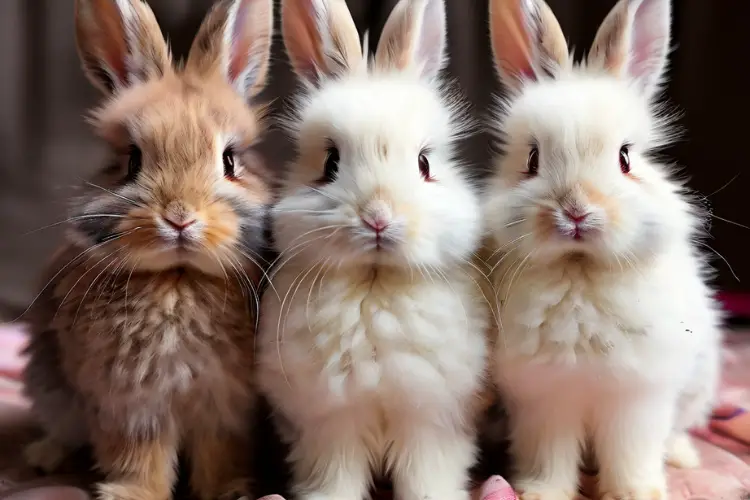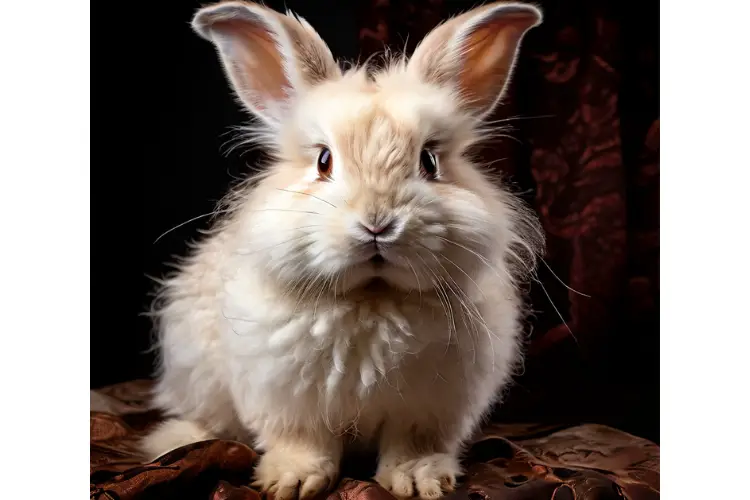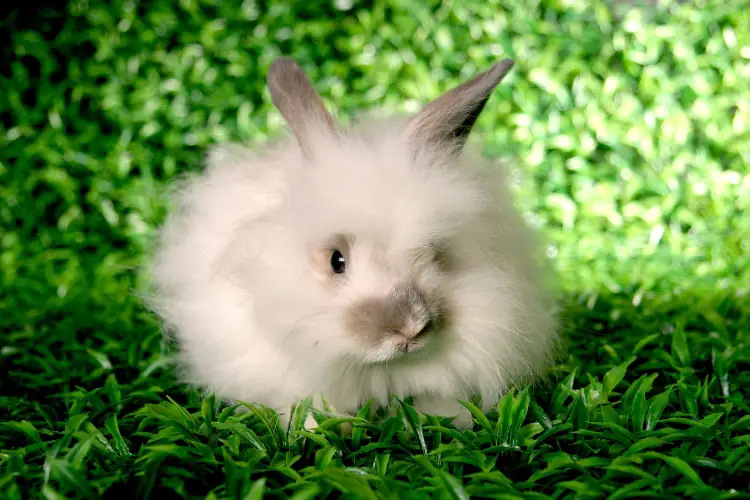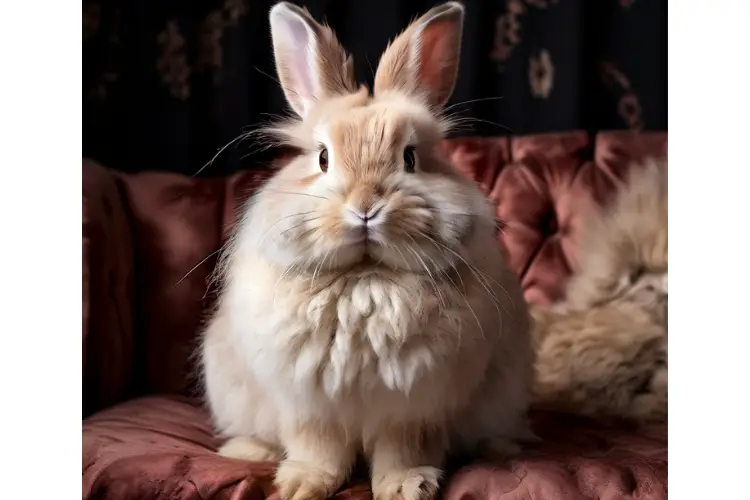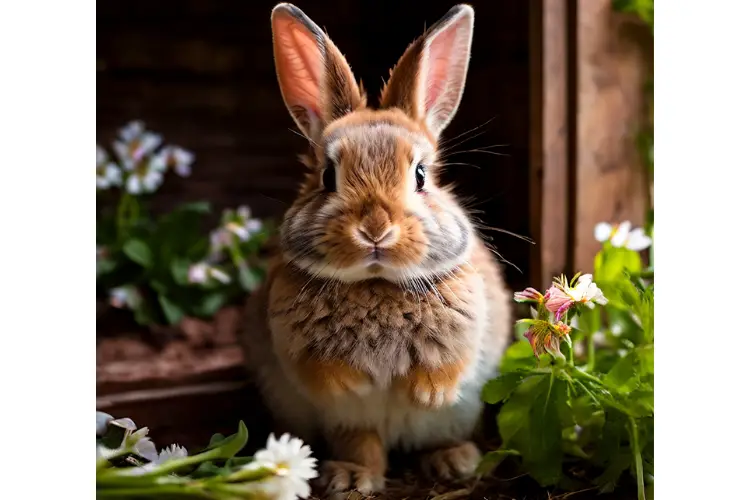The German Angora rabbit is most well known for its long, luscious fur that almost skims the ground as they hop along. These big bundles of fluff make for a gentle and affectionate pet that enjoys human interaction.
Their high-maintenance coat does require consistent grooming, but spinners and weavers covet the German Angora for its soft and warm Angora wool.
In this blog post, we will about the breed standards, ideal care, temperament, and more when it comes to these fabulous fluffy bunnies.
Origin:
The German Angora rabbit originates from the Ankara region in Turkey (formerly known as Angora). Claims of importing the first German Angoras to Germany happened around 1723. They were originally bred for their long, thick, spiral fiber that could be shorn and spun into yarn.
While not as well known as other rabbit breeds, the German Angora has a devoted following amongst rabbit enthusiasts, pet owners, and textile artists drawn to their lovely long fur.
Physical Features & Breed Standards
The most prized and distinguishing feature of the German Angora is undoubtedly its fur. The ARBA (American Rabbit Breeders Association) standard calls for a double coat:
- Undercoat: Soft, dense wool that grows close to the skin
- Outer coat: Long, straight guard hairs growing up to 6 inches long!
Their fur is so profuse that it parts along the spine and fans out along the sides, often sweeping the ground. Daily brushing and grooming is a must to prevent matting.
Conformation Viewpoint Head – Should have well-developed cheeks, rounded crown Ears – Minimum weight of 5 ounces per pair, erect carriage Eyes – Bold and bright Body – Compact, well-filled hindquarters Legs/Feet – Medium bone; fur covers feet
Tail – Straight, well-furred
Fur Texture Expectations Density: Extremely dense undercoat covered by silky guard hairs Texture: Soft, fine undercoat. Guard hairs are straight, not wooly Length: Minimum of 3 inches to reach breed standard
Acceptable Colors: White, Ruby-Eyed White, Black, Blue, Fawn
Size & Weight Parameters Does – Minimum 9 lbs Bucks – Minimum 9.5 lbs
Personality & Temperament
You’ll frequently hear German Angoras referred to as gentle giants. Their personalities tend towards being calm, docile, trusting, and tolerant. They become very attached to their owners and relish gentle petting and brushing sessions.
As prey animals, quick movements or loud noises may initially startle them. But they generally adapt well to being handled once they know they can trust you. These affectionate fur-babies will happily curl up on your lap for pets and television watching!
Their gentle nature makes German Angoras a good choice for households with older respectful children. Always supervise young kids to make sure they don’t get too rough and pull on this delicate breed’s fur.
Housing Requirements
As one of the larger breeds, German Angoras need a spacious cage or enclosed pen to stretch out those fabulous fuzzy feet. The enclosure dimensions should measure at least 36”L x 30”W x 24′′H for one medium-sized bunny. Add at least 6 square feet per additional rabbit housed together.
Protection from cold wintery drafts is a must. In continuously cold climates, many owners bring their German Angoras indoors to live cage-free as house rabbits. Just be sure to bunny-proof any areas they have access to!
The enclosure floor should be solid and easy to clean — no wired floors that can catch those long toenails. Line the bottom with several inches of paper-based bedding or litter. Replace soiled bedding completely at least once a week.
German Angoras love, love, love having things to hide in and tunnels to dart through. Be sure to provide a snugly hiding house along with cardboard tubes, tents, and other enduring toys. Rotate novelty toys to keep things interesting.
Proper Diet & Nutrition
German Angoras should eat a diet comprised of:
- High-quality pellets with at least 18% fiber
- Grass hay (timothy, orchard grass, oat hay)
- Fresh leafy greens daily
Introduce vegetables slowly, limiting to about 1 cup per 4 lbs body weight per day.
Avoid fruits completely due to their high sugar content. Occasional herbs like parsley or cilantro make tasty treats. Always provide unlimited timothy hay — it promotes healthy teeth and digestion.
Supplement with a multivitamin if not feeding a variety of vegetables. Fresh clean water in a tip-proof bowl should always be available.
Shedding & Grooming Requirements
That luscious long coat of the German Angora requires DAILY grooming sessions. Skipping just a few days can allow painful mats to form close to the skin.
Appropriate handling is also key to having a bunny comfortable with grooming:
- Handle feet/fur frequently from a young age
- Avoid restraining; have bunny sit relaxed on your lap
- Offer fruit wood sticks to nom on during sessions
Daily grooming routine — what you’ll need:
- Slicker brush for teasing out loose fur
- Fine-toothed comb to catch stubborn tangles
- Mat splitter or seam ripper for removing clumps
- Lint roller for quick upsweeps
Plan for weekly light trims to neaten fur and keep clean. Remove superficial mats carefully to avoid injuring skin. Separating shoulder fur and hind leg tufts prevents soiling from urine.
Molting occurs up to 3 times per year, with epic blowouts of all that fluff! Help your bun stay tidy by brushing very thoroughly each day, multiple times if needed. The effort pays off in beautiful shimmering coats and bonded bunnies.
Breeding German Angoras
Reputable German Angora breeders focus on improving the breed and producing quality specimens meeting ARBA standards. They work diligently over generations to breed out genetic defects.
Mating decisions get made carefully with pedigrees in hand and breed details exchanged. The dam should grow large enough before being bred at 8-9 months old. Breeding does too young risks life-threatening complications.
The breeding pair will be brought together in the doe’s enclosure and should breed naturally. However, breeding success rates are only around 50% for maiden does. Litter sizes range from 1-7 kits but smaller litters are more common for first-timers.
Nest boxes get furnished with ample hay just prior to kindling. The doe prepares a fur-lined nest in the box to birth her kits and nurse them there for a few weeks. Kits begin eating solid foods like hay and pellets around 12 weeks old.
Showing German Angoras for Competition
For German Angora enthusiasts involved with ARBA conformation showing, much effort goes into conditioning the rabbits’ coats. Every aspect of grooming and presentation aims to have them looking their absolute best when facing judging.
Show coats grow via diligent forced molting. The rabbit periodically gets shorn down denuded to remove all guard hairs. During regrowth, meticulous daily grooming allows only the most perfect hairs to remain. Touch-ups happen right before competition.
The judged presentation includes table posture, brightness of eyes, body type, fur quality, and adherence to the German Angora standard. Competition grooms several months in advance to contend for Best in Show!
Where to Purchase German Angora Rabbits
Prospective owners wanting to add one of these fabulous fur-babies to your home should plan to spend 75 to 200+ per bunny. Prices vary based on fur quality, pedigree, breeder reputation, and even coat color.
Finding good breeders can prove tricky since they remain rarer than other breeds. Partner with an ARBA-approved breeder for the best shot at a healthy bunny. Avoid pet stores or backyard breeders with sketchy backgrounds.
Many breeders utilizing science-based culling standards only retain the very fluffiest offspring with perfect fur, conformation, temperament, etc. Prepare for waitlists that can extend up to a year or more! But the eventual snuggly armful of fabulous fluff will prove well worth it.
The Furr-ociously Fuzzy German Angora
These fabulous fluffy German Angoras capture your heart with their sweet personalities and outrageous good looks. Shower them with brushy time and enjoy the Angora love! Their high-maintenance coat does require a devoted commitment. But their wool also offers creative rewards for spinning enthusiasts.
Hopefully this overview better introduces the German Angora breed and assists with deciding if their fabulous fluff might be the right furry fit for your home!

